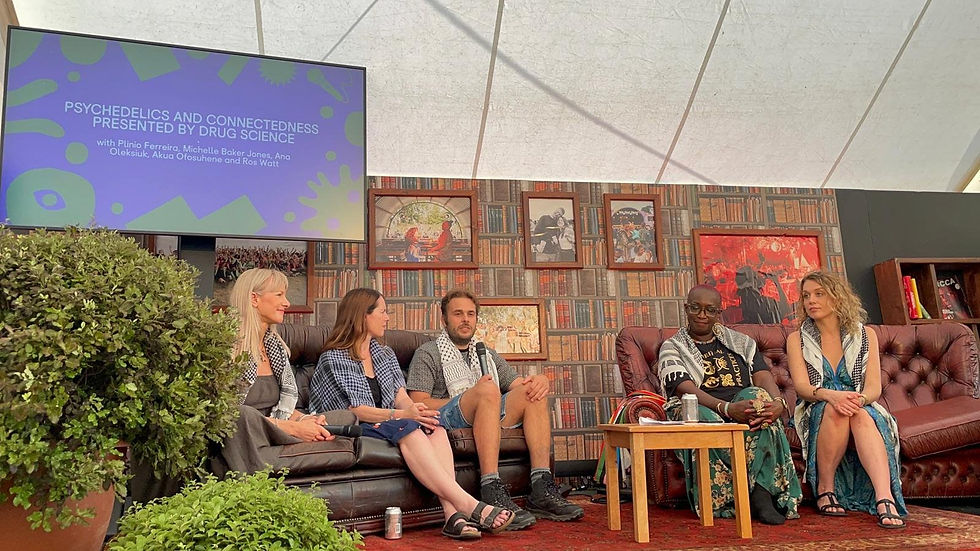Teaching Children about Vaping
- Hannah Dawes
- Feb 5, 2024
- 3 min read
Updated: Jun 5, 2024

Written by Hannah Dawes
In a world of misinformation, what can we teachers do? What should we do? How to capture the strained attention of a young audience and give them something useful?
TikTok makes for gripping viewing. One video shows stock footage of a coffin being lowered into the ground. My friend died of vaping, comes the caption. It is one of hundreds of similar videos, most of which are easily debunkable. But algorithms push the story into feeds. More people are captivated, more persuaded. Vaping Bad!
Or maybe not.
Take a 14-year-old schoolboy for whom risk is more an invitation than a warning. He might believe the falsehood, struck by its visual and emotional drama. But far from being daunted, he is stimulated by it. The peril is exciting – another avenue for mischief, for status and respect. Puff away! After all, for every video that aims to shock, there are others that openly glamourise and celebrate these small, colourful devices.
In 2023, over 20% of children in the UK had tried vaping, up from less than 11.2% in 2021. Among 16-17 year-olds, 15% are now vaping more than once a week (ASH). But while we have the stats, the health effects of vaping are still largely unknown. As the example above demonstrates, many efforts to counter this surge have brought us more fake news. And what’s more, much of this misinformation is counterproductive. Sometimes it’s the Head’s anecdote in the Sport’s Hall rather than the coffins on TikTok. But both are equally damaging, favouring sensation over truth, shock-factor over evidence. Meanwhile, teachers are told to ‘give them a talk’ about vaping, for which they often feel under-prepared. Vaping is a relatively new trend after all, and one in which some teachers are themselves participants.
It’s complicated and I wanted my resources to encapsulate that struggle – a challenge that our government ministers are grappling with today: How can we reach our target of a smoke-free 2030 whilst ensuring teenagers stop vaping? Dr Chris Witty neatly articulated the goal in May last year when he said, ‘If you smoke, vaping is much safer; if you don’t smoke, don’t vape.’
But Chris Whitty is perhaps not the most dazzling guide for today’s teens. So how do we get through to them in a meaningful way? For starters, we might be well advised to treat them with a degree of respect. Maybe give them a few facts to chew over instead of assaulting them with yet another patronising spectacle of fiction. Let them engage their minds instead of tugging at their emotions. As teachers, should we not be in the business of educating rather than persuading?
My own efforts have focused on using cutting edge research from some of the UK’s top drug scientists in order to create resources that teachers can confidently deliver in the classroom. Students will then learn about the history of tobacco, the influence of advertising, and the scientific background to addiction. They will also engage in debates around vaping as a harm-reduction tool and the environmental consequences of disposable vapes.
Thus equipped, the next time a youngster is told that vaping is harmless, or indeed that there is an epidemic of vaping casualties, maybe they will raise an eyebrow and attempt to see through the weeds.
Upcoming event on vaping

Wednesday 28th February – online
Drug Science is hosting a webinar discussing the issue of nicotine and vaping education in schools. Hannah Dawes will be joined by three other experts who took part in the creation of these new resources.
Three lessons for the classroom
The Exchange has developed these lessons with Drug Science to equip teachers to talk about vaping in the classroom. All of these are freely accessible and we encourage teachers to use these to enable a classroom debate on whether the UK government should ban disposable vapes.
Lesson 1 – The History of Tobacco

This lesson provides the historical context for a meaningful conversation around the harms of smoked tobacco and how to reduce them. It sets vaping in its therapeutic context as a tool to reduce the harms of smoking.
Lesson 2 – Nicotine and Vaping

In this lesson, pupils will learn more about vaping, initially as a tool to reduce harm for smokers. The harms of vaping will be assessed by looking at current scientific research and interviews with experts.
Lesson 3 – Debate: Should the government ban the sale of disposable vapes?

This lesson allows the children to engage with all sorts of perspectives on the issue of disposable vapes by examining both sides of the debate using evidence to support either side. This lesson should end in a debate amongst the students.




